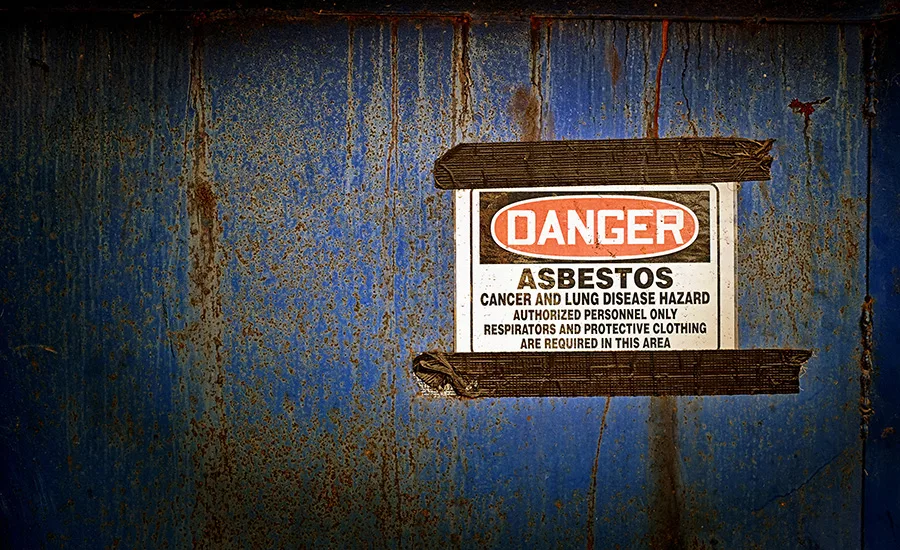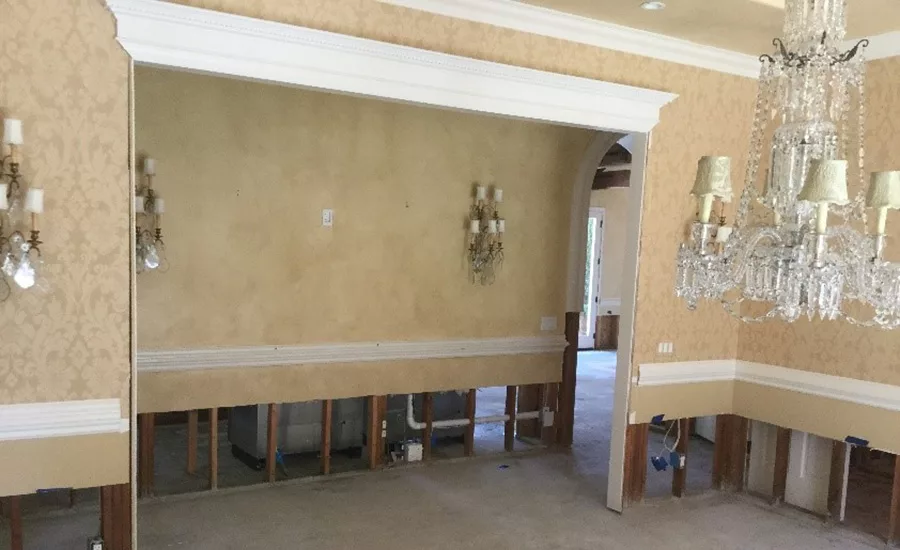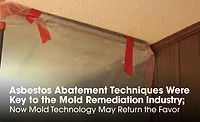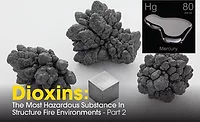Dangers of Asbestos Contamination Post-Abatement

Photo credit: RapidEye/iStock / Getty Images Plus via Getty Images

Photo credit: Sean Scott
Prior to 1980, many building materials manufactured in the U.S. contained asbestos. This was due in large part to its fiber strength, heat resistant qualities, low cost to mine, and abundant availability.
Some of these materials included drywall and taping compounds, insulation, cement, plaster, wallpaper, vinyl flooring, and a wide range of other products.
In 1977, the Consumer Product Safety Commission banned the use of asbestos in drywall taping compound. However, building material suppliers were allowed to continue selling their stockpiles until they were exhausted. This is one reason why asbestos is found in homes and buildings built in the 1980’s and later.
Asbestos-containing materials (ACM) left undisturbed pose little risk to human health. However, when materials that contain asbestos are damaged, cut, sanded, or otherwise disturbed, asbestos fibers can be released into the air where they can be inhaled. This can lead to a variety of life-threatening diseases, including asbestosis, mesothelioma, and lung cancer.
It is standard practice for restoration contractors who work in older homes to have materials suspected of containing asbestos tested, especially interior finishes such as plaster and drywall taping compound.
If the test samples indicate that asbestos is present, then a certified asbestos abatement contractor will need to perform abatement work before any restoration services begin.
Once the asbestos is removed, a third-party testing company should perform post-abatement air sampling to be sure the asbestos abatement work was done properly. This is commonly known as a clearance test. If the clearance test fails, the abatement contractor must decontaminate the areas again and call for another clearance test. Once the clearance test passes, the abatement contractor will dismantle their containments and remove their equipment so repairs can begin.
However, safety precautions need to be taken when repairing drywall or plaster that contain asbestos. The process of patching drywall or plaster requires that the joints, corners, edges, and seams be sanded to blend the texture so you can’t see where a patch or repairs took place. This can cause widespread contamination as the process to repair these materials requires disturbing surrounding areas where old ACM may be disturbed.
To better illustrate this, one of my colleagues was involved in a water damage claim in an older home where asbestos was found in the drywall compound and texture. An asbestos abatement contractor was called in to remove about two feet of drywall around the perimeter of the walls that were wet. Once the abatement was complete, the abatement contractor called for a clearance test, which passed. Shortly thereafter, the restoration contractor began doing repairs to the drywall, where the seams between the old drywall and the new were taped, mudded, and sanded to blend the texture with the surrounding surfaces. What the contractor didn’t realize is when he sanded the surfaces, asbestos from the old drywall texture was released.
Shortly thereafter, the homeowner, who also happened to be an attorney, noticed a layer of white dust all over the house and furniture. She then stopped the job and demanded a second clearance test be performed to see if this dust contained asbestos. Sure enough, when the second clearance test was conducted, the laboratory found the dust contained asbestos and the entire home had been contaminated. This resulted in another asbestos abatement, along with the replacement of all the carpeting throughout the home, replacement of all the heating ductwork and furnace, window treatments, clothing, furniture, and most of the homeowner’s personal property.
This scenario of restoration contractors inadvertently creating asbestos contaminations during interior drywall or plaster repairs is becoming all too common. If you Google “contractor fined or jailed for asbestos contamination”, you will find too many cases to count.
When using Xactimate to estimate repairs to ½” drywall that has a 2’ flood cut, the code “DRY LF” is commonly used. The description of this line item states the following: Includes: Drywall, metal corner bead, joint/texture compound (mud), joint tape, drywall screws, and labor to install. Labor cost to cut and remove drywall, including screws and/or nails, in a strip up to 2' tall and to discard in a job-site waste receptacle.
Excludes: Heavy or complex texturing or texturing/blending beyond the joint.
Note: The time assumptions within this item are based on common difficulties related to replacing only 2' of drywall, such as working at a low level, blending a non-factory joint on a finished wall, a higher proportion of jointing, and a higher number of outlet cutouts compared to full wall/room replacement. Assumptions are also included for a basic finish or a non-complex smooth wall finish or a light machine texture for both the specific area of drywall being replaced and the required blending to match the existing drywall. If additional texture is needed to blend beyond the area being replaced and initial feathering, or if more heavy or complex texturing is being used over the entire surface, etc., then additional line items or adjustments may be needed to compensate.
As a rule of thumb, if you perform repairs in a building where sections of ACM have been removed, be sure to take proper precautions to prevent secondary asbestos contamination.
Here are three options to consider when repairing drywall or plaster that has ACM:
- Apply a layer or skim coat of new taping compound for the entire wall or ceiling surface so it can be sanded without disturbing the ACM.
- Apply a layer of ¼” sheetrock over the entire surface area that needs repair. This will prevent sanding into the ACM. The challenge here is you may also have to replace baseboards, casing, crown moldings, and move outlets and switches forward.
- Have the entire wall or ceiling that has ACM abated and then replace the removed sections with new material.
Keep in mind wet sanding is still sanding and when the wet ACM dust dries, it becomes friable. Even “dustless sanding” creates some dust and will also contaminate the sanding equipment.
As a rule of thumb, if you repair drywall or plaster that contains asbestos, consider suitable options to eliminate any risk of disturbing ACM and causing a contamination. To avoid potential liability, obtaining a clearance test after repairs are done can provide you and the building occupants with proof that you did your work properly.
Looking for a reprint of this article?
From high-res PDFs to custom plaques, order your copy today!







